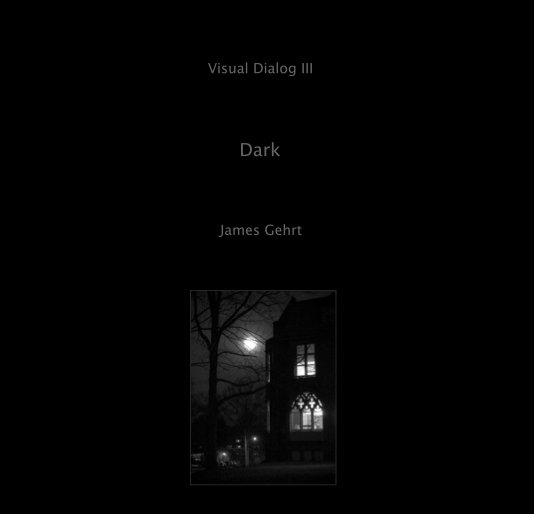Informazioni sul libro
Darkness and photography have always been tied together for me. When I would load film holders and process film in trays, it would be in complete darkness. The strange part was, I always kept my eyes closed even though the lights were off. Many hours were spent in darkness. I began to feel like I could identify with miners. Still there was always some part of it that was meditative and relaxing for me. The dark was an escape from the rest of the world and I entered a place where only images were made.
Now I do many other things where I make my images. The equipment is no longer just for photography. I never used my enlarger for paying bills, ordering movies, or sending messages to friends. With editing on the computer, the darkroom is now more accessible. I don't have an excuse for not going to the darkroom. I have found that I work best if I still set the stage for processing images. I keep the lights off, play some music and try to stay focused on just the images. Next time, I just might turn on the amber glow of a safe light and have the sound of water bubbling in the background for old times sake.
Not only was the dark a place for work, but it was also a place existing in some of my images. I always loved shadows that would just suggest what was visible in the darkness. This is one aspect of photography that stayed with me in the transition to digital. Rich dark shadows are a bit more predictable now. It is not as hard to get the perfect repeatable dodge.
When I was younger and printed for photographer Bill Arnold, he would ask me how the darkness of a print would make me feel. After my answer, he would then ask if that complimented the feeling that was desired in the image. I learned that there isn't a correct way for a photograph to be printed. For me, I know it's "right" when I feel a connection between the moment that the shutter is released, and the feeling that I get in my stomach when I see the image on paper.
The images in the following body of work have elements of the dark within them. Some where created in the darkroom with film, while others were created in the light with pixels. I enjoy how the darkness allows the possibility of light to reveal what is inside. There could be shafts of light, the subject peeking into the light, or the subject hiding from the light. It can be a window, a door, fire, a bulb, or the sun itself, that can set aside the dark and allow us to step through it.
Now I do many other things where I make my images. The equipment is no longer just for photography. I never used my enlarger for paying bills, ordering movies, or sending messages to friends. With editing on the computer, the darkroom is now more accessible. I don't have an excuse for not going to the darkroom. I have found that I work best if I still set the stage for processing images. I keep the lights off, play some music and try to stay focused on just the images. Next time, I just might turn on the amber glow of a safe light and have the sound of water bubbling in the background for old times sake.
Not only was the dark a place for work, but it was also a place existing in some of my images. I always loved shadows that would just suggest what was visible in the darkness. This is one aspect of photography that stayed with me in the transition to digital. Rich dark shadows are a bit more predictable now. It is not as hard to get the perfect repeatable dodge.
When I was younger and printed for photographer Bill Arnold, he would ask me how the darkness of a print would make me feel. After my answer, he would then ask if that complimented the feeling that was desired in the image. I learned that there isn't a correct way for a photograph to be printed. For me, I know it's "right" when I feel a connection between the moment that the shutter is released, and the feeling that I get in my stomach when I see the image on paper.
The images in the following body of work have elements of the dark within them. Some where created in the darkroom with film, while others were created in the light with pixels. I enjoy how the darkness allows the possibility of light to reveal what is inside. There could be shafts of light, the subject peeking into the light, or the subject hiding from the light. It can be a window, a door, fire, a bulb, or the sun itself, that can set aside the dark and allow us to step through it.
Funzionalità e dettagli
- Categoria principale: Fotografia artistica
-
Formato del progetto: Quadrato piccolo, 18×18 cm
N° di pagine: 40 - Data di pubblicazione: ott 27, 2009
- Parole chiave James Gehrt, Front Porch Editions, Black and White, Dark, Photography
Mostra di più
Informazioni sull'autore
James Gehrt
Leverett, MA, USA
I have been carrying a camera with me for 30 years. I shoot the things in life, where I am. The subjects are usually not beautiful on their own, but somehow strike me by the beauty found in their commonality. Not the extraordinary, but the ordinary. Simple, usually quiet subjects that may go unnoticed. Black and white because I guess that is how I have learned to see. To me, my images feel a bit sad, a bit strange, a bit interesting, and the subjects, somehow unique. I hope you enjoy and thank you for visiting.


